
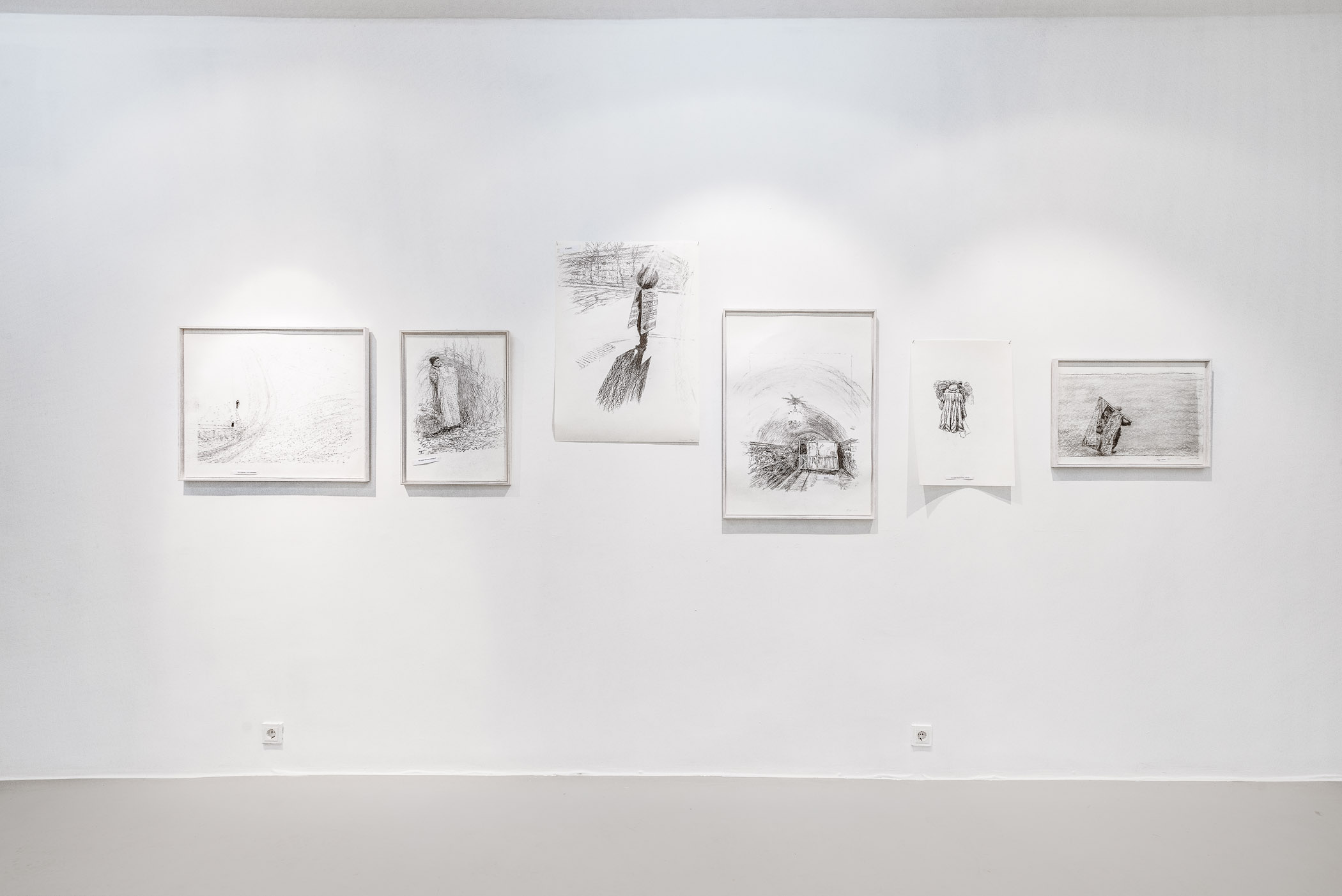
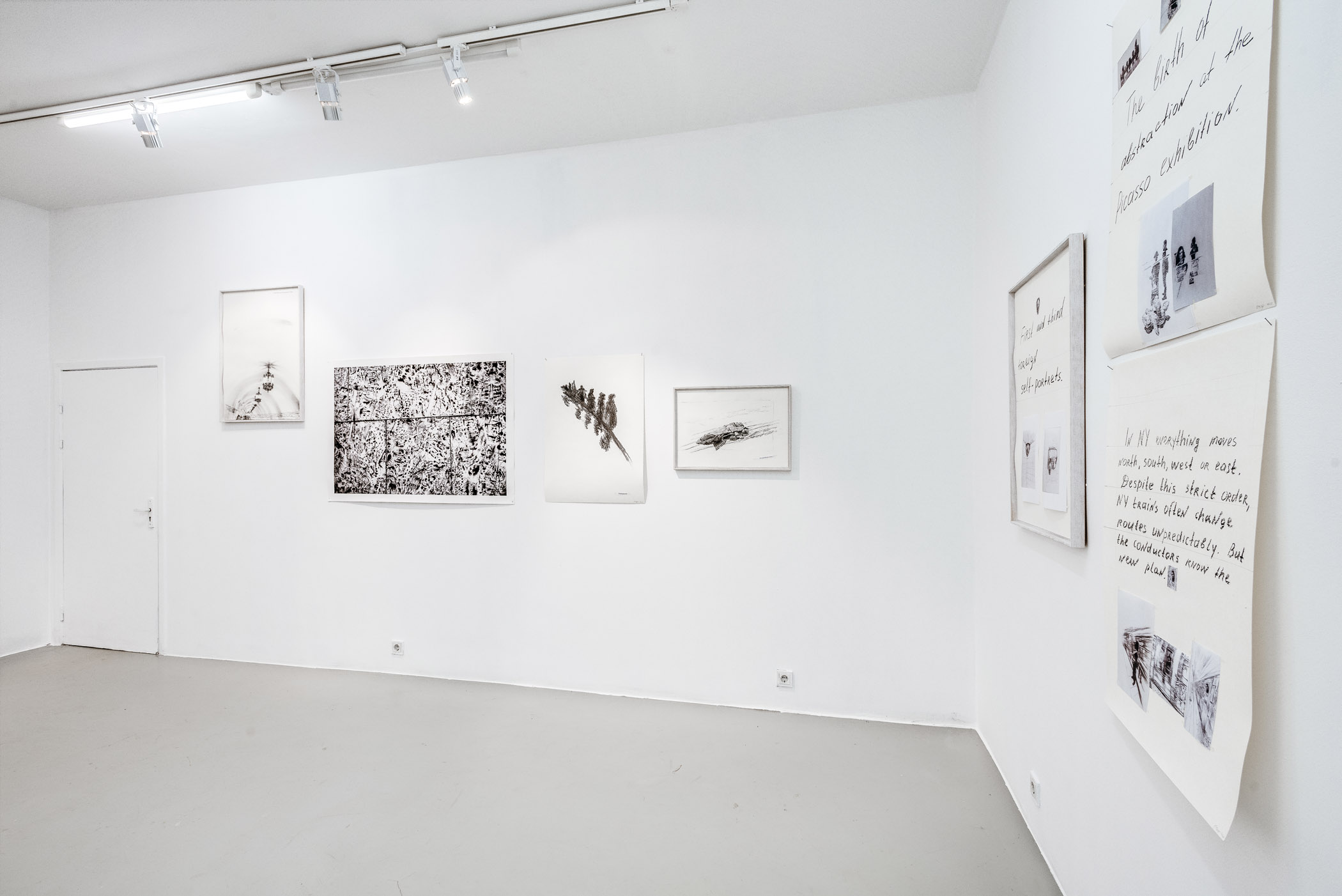
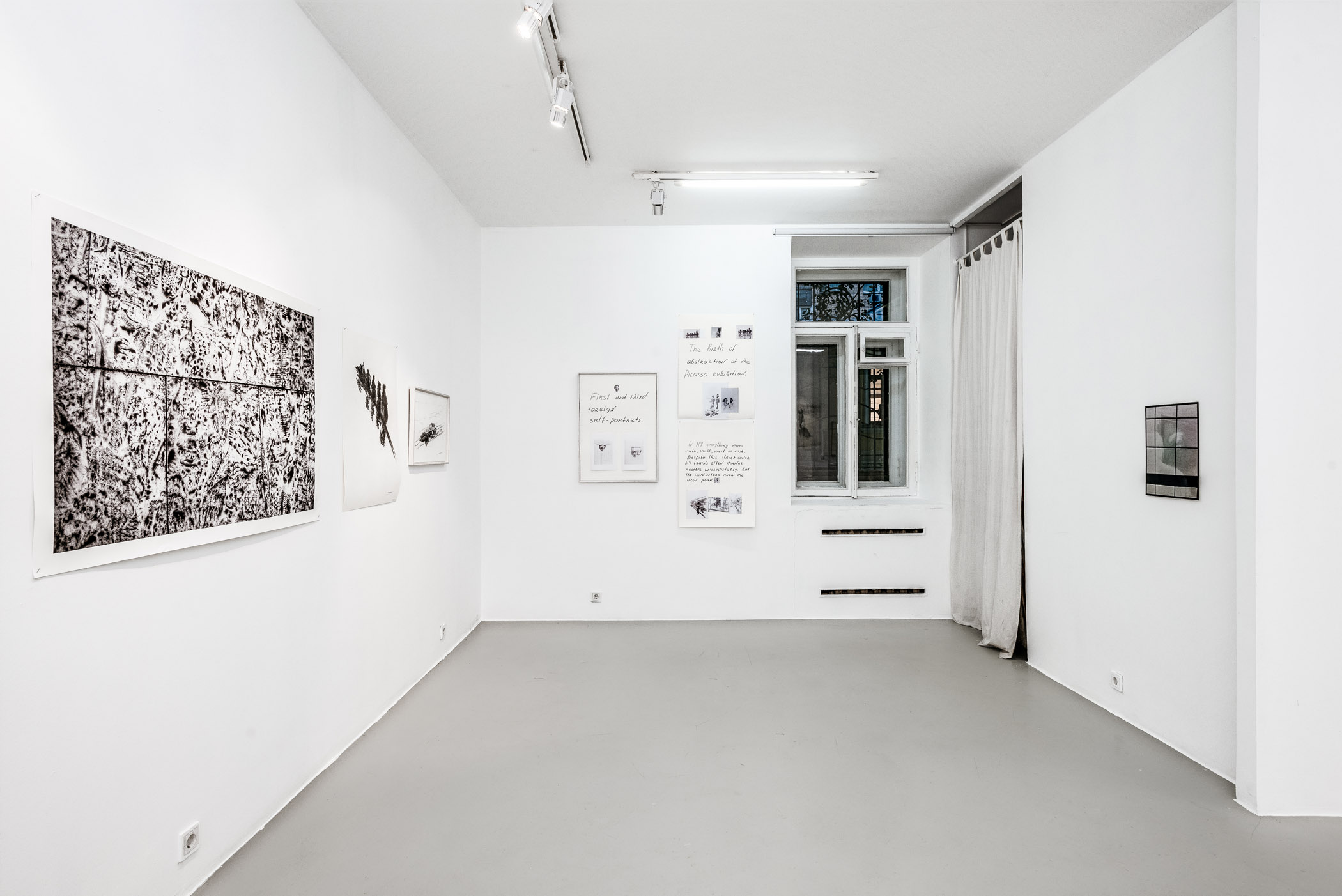
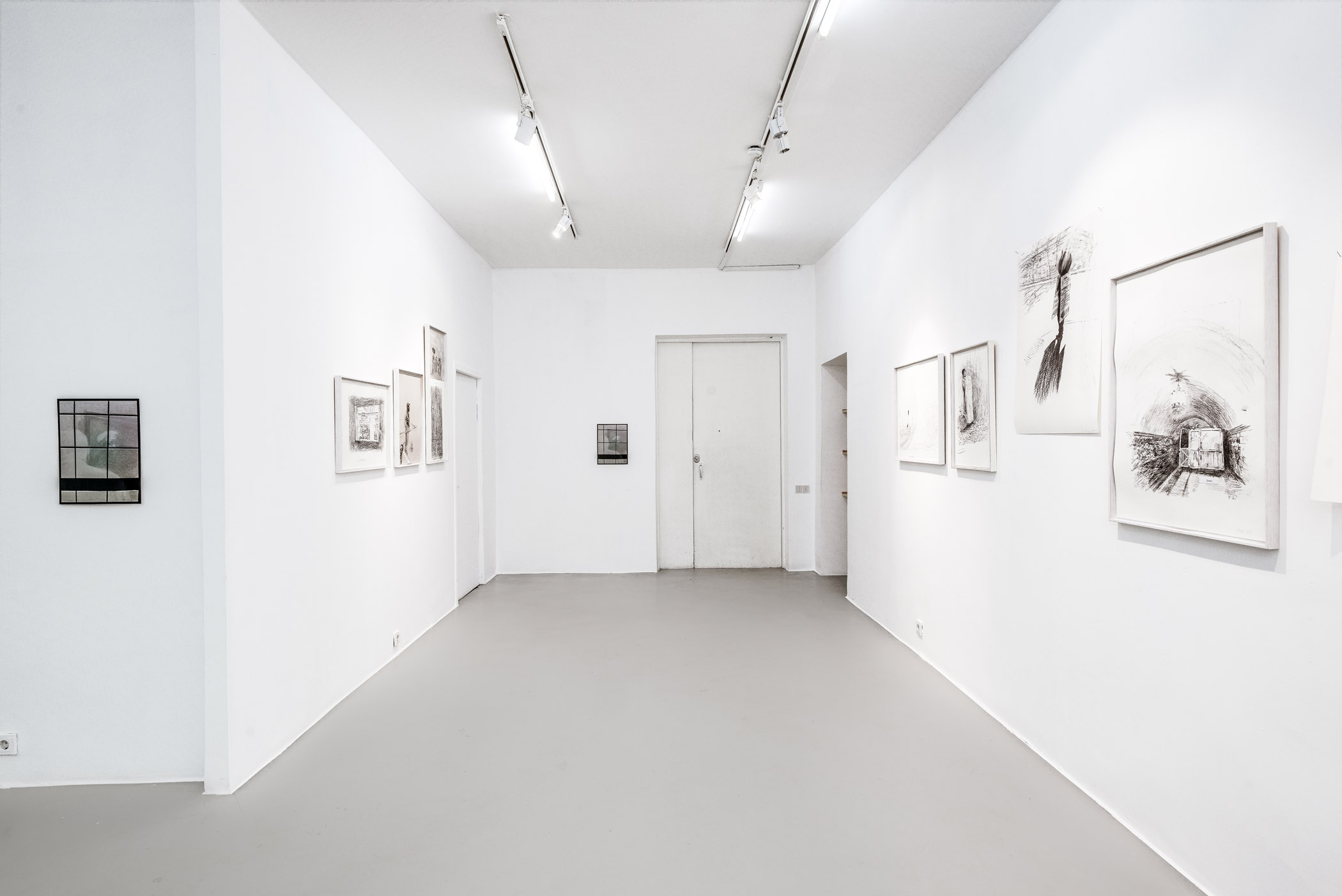
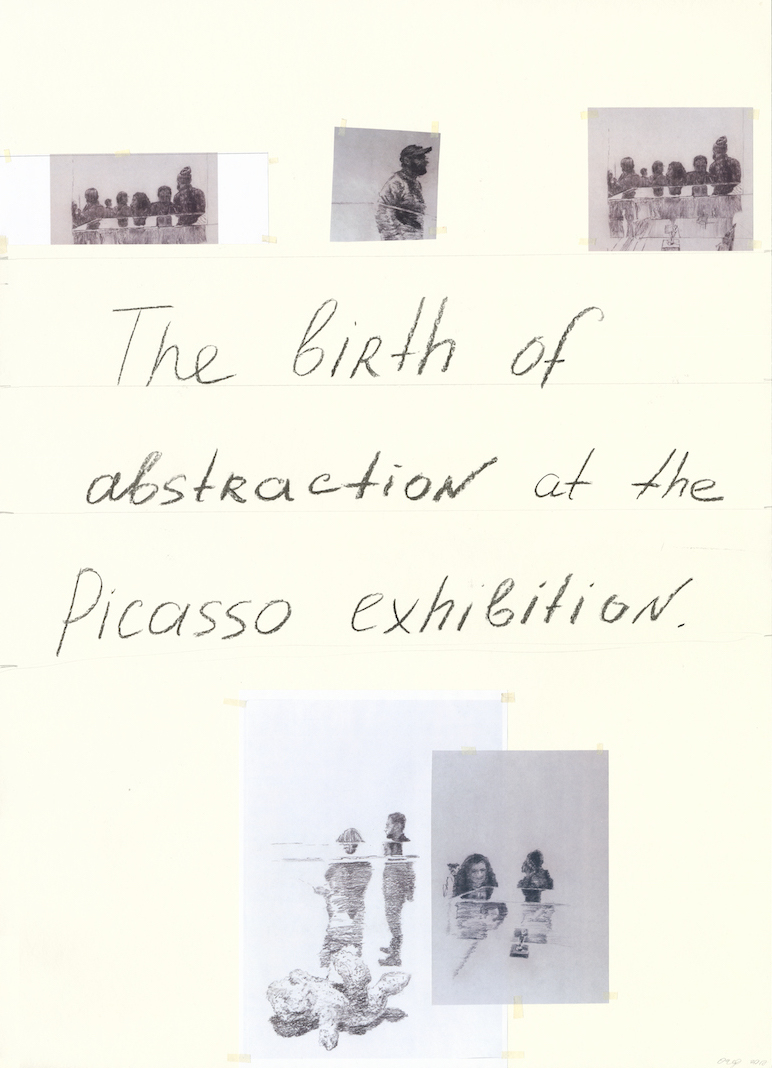
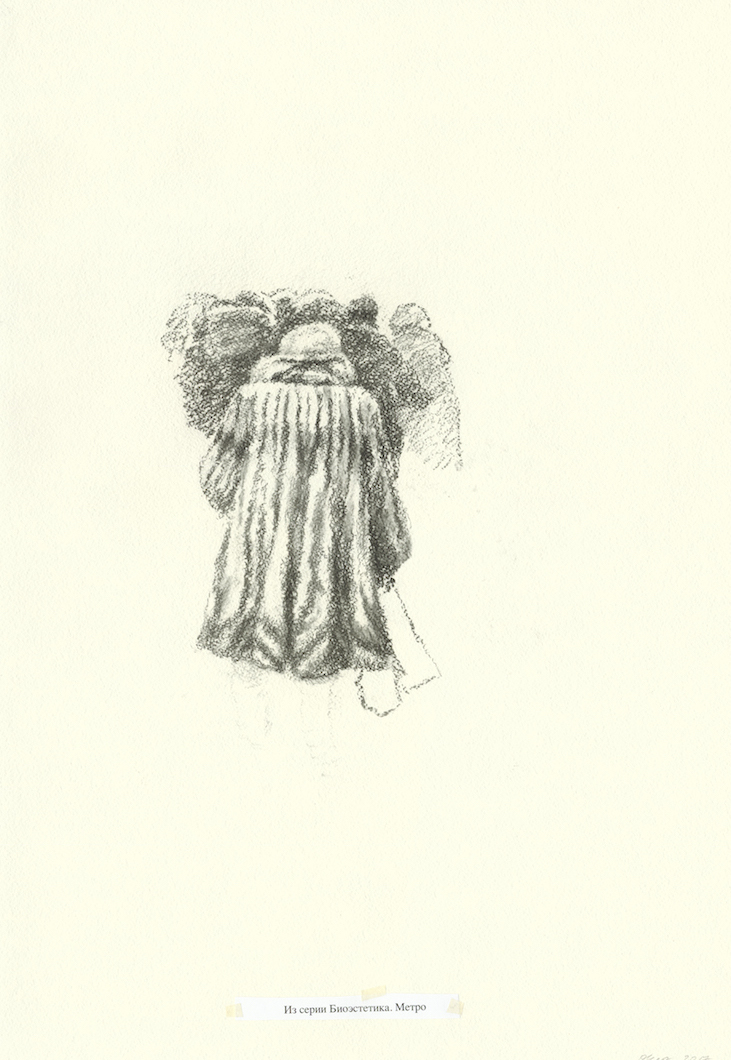
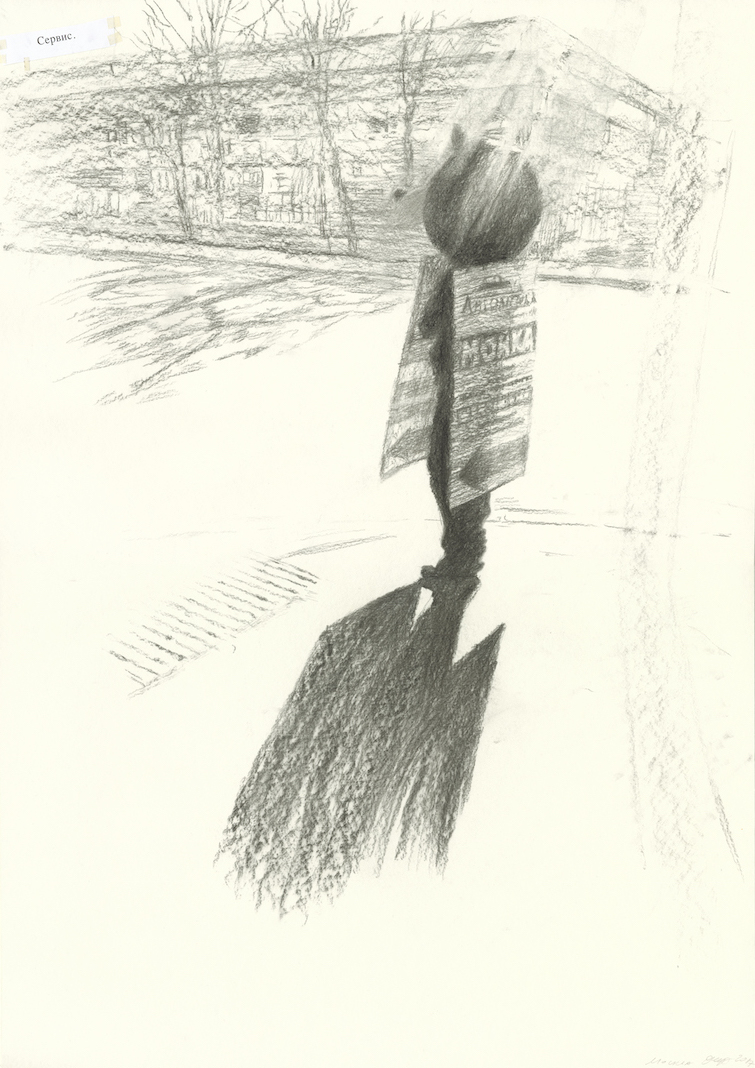










How does the impulse to draw something begin? This question, akin to asking what makes an artist an artist, is posed by the British art historian John Berger in his book of musings on drawing and his attitude to reality, “Bento’s Sketchbook”, and then he goes on to provide an astute answer. According to Berger, drawing is a form of investigation where one can feel one’s way. The first impulse to draw usually comes from a human need to carry out a search, to place points on a paper, to find a place for things and for oneself. . Drawing entered Olga Chernysheva’s artistic practice in the 1980s when she was studying to become an animation artist at VGIK (the All-Russian State University of Cinematography), and then, after a break, she returned to it, raising it to what is now an indisputable place alongside the photography, video and painting that brought the artist international renown in the 1990s and the beginning of the 2000s. Freed of its traditional ancillary role as a sketch for a future work, the drawing in Chernysheva’s work didn’t just acquire an expressive independence, it also passed over its borders and formed an entire artistic approach in itself as a resource that forces one, according to the artist, “to create the entire world anew […] from familiar items that, as a rule, already exist,” echoing Berger’s definition. Art, for Olga Chernysheva, is to a large extent a thought process in which the eye participates on a par with the hand, and an ability to conceive in images that are capable of finding their embodiment in any material-spatial form. Thus, the fact that the artist programmatically refuses to draw dividing lines in her work between different media and often combines them within the frameworks of separate projects and exhibitions – and this exhibition at Galerie Iragui serves as confirmation of this – appears to be no coincidence.
Olga Chernysheva’s work is born out of an attentive gaze that doesn’t neglect the minor or insignificant and notices similarities, however grotesque they might seem to be, as in the renowned photo-series “Waiting For a Miracle” (2000), where women’s knitted hats look like exotic cactuses. The title “Settings”, which brings together the drawings and photographic prints presented in the gallery, references a special optics for the gaze that allows us to notice a shriveled oyster on a homeless person’s stall (from the series “Objects. Overcoat”, 2017), to consider the landscape that opens up to us from the cabin of a man on duty at a metro station (from the series “Landscape that opens up from the window of a man on duty at a station”, 2017) and to make out faces and patterns in the dirty markings on a tiled floor left by the footwear of passengers on the metro (“Attunements”, 2013). These works (the artist calls her drawings “environmental”) tune the viewer in, but they also exist as a result of special settings of the eye, which is at once sensitive to the most everyday reality and to formal games that are hidden within its depths. “In the world there are repetitions, and I’m interested in similarities,” explains Chernysheva.
Built on similarities, the pictures presented reproduce the mechanisms in the working of memory. We note and remember certain details which build up into a seemingly whole image, but remembering the expression of a person’s eyes that defines their image for us, we can’t remember the shape of that person’s nose. The memory establishes special relations between the fragment and the whole, like those between reality and abstraction. The remembered image that is conveyed by Chernysheva’s drawings is founded on the reality of the abstraction, the sediment and remainder of what is seen that emphasizes the main thing (the fragment), preserving the link with the general (the whole) that is blown in on a draft of air. The tension that is inherent in the drawing between the concrete form and the abstract image that is conveyed by the strokes (the photographic prints presented at the exhibition are in many ways close to drawings), reflect the struggle which, according to the artist’s own admission, the abstract is waging in her works with the “human” or “personal.” In Chernysheva’s works, the “human” not only wins, dragging the fur coat, hat and other items belonging to a person along after it, it also becomes stronger and more expressive through the inclusion of abstraction within it – thus, the absurd sphere on the head of a person covered in advertising billboards, ready to disappear like an inflatable ball into the sky and fly off in a gust of wind like a dandelion, overcoming the force of gravity of its shadow (“Service”, 2017), eloquently demonstrates the inexorable form of life, becoming a part of post-Soviet reality. At the center of the majority of the artist’s works there is a lonely character whose dark contour stands out from the mass of people or the surrounding landscape; it finds itself alone with itself and vulnerable in its intimacy which has been left ajar. But here an artist comes to his aid because, as has already been noted repeatedly in texts on Chernysheva, her works possess an undoubted sympathy for her characters, and her gaze is this very same “humanity.”
In this sense, Olga Chernysheva’s drawing resonates incredibly precisely with the essence of her art and the tonality of her work in a way that the works of few other modern artists can. The rough hatching left by the charcoal on the paper, showing through and looking to disappear, filling the emptiness of the sheet with its fragile presence – this is whispered conversation and confiding intimacy, free of any aesthetic gloating, loud self-affirmation and the haughty knowledge of an outside observer. In other words, this is a very human art that invokes restraint (the signatures stuck over the top of the pictures, which, in the artist’s conception, should “extinguish their uniqueness, bring them down a peg,” play their role here). This is a dedication to the insignificant, to the barely discernible, to the flickering and vague that are blurted out in story about something that is important. In such stories, as John Berger notes, the mystery is not worked out, but passed on, the body of an individual has the same relationship to a community of people, and characters don’t fulfill a role, they fight for survival, and win.
Elena Yaichnikova